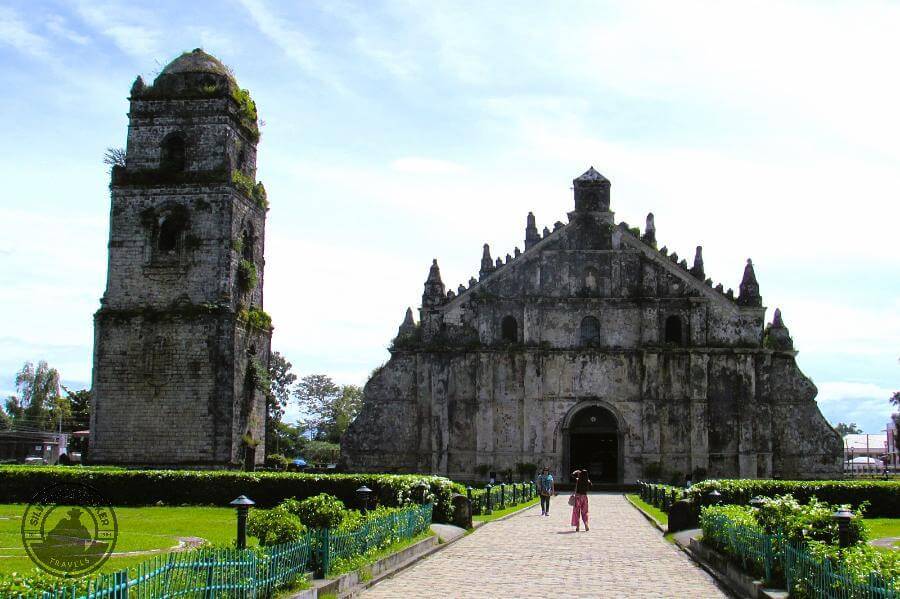”UNESCO World Heritage Sites of the Solid North
UNESCO World Heritage Sites of the Solid North
The northern provinces of the Philippines, often referred to as the “Solid North,” boast an incredible array of UNESCO World Heritage Sites, capturing the history, culture, and natural beauty of the region. Spanning the Ilocos and Cordillera Administrative Regions, these sites reflect the diverse historical and cultural heritage of the Philippines.
From ancient rice terraces that reveal the indigenous knowledge of mountain communities to colonial churches that have withstood centuries, the Solid North offers visitors a profound look into Filipino heritage that remains unique and impactful. Let’s delve into the UNESCO sites that define this fascinating region.

1. The Baroque Churches of the Philippines: Paoay Church, Ilocos Norte
Among the UNESCO World Heritage Sites in the Solid North is the Church of San Agustin in Paoay, known more commonly as Paoay Church. Recognised in 1993 as one of four Baroque Churches of the Philippines, Paoay Church stands out for its architectural resilience and historical significance. Built in 1710, this church showcases a distinct “earthquake Baroque” style, crafted to withstand the tremors that periodically shake the Philippines.
What makes Paoay Church remarkable is its massive buttresses along the sides and rear, which provide structural stability and a striking visual appeal. These buttresses, with carved elements that blend European Baroque style and indigenous influences, reflect the adaptability and ingenuity of Filipino builders during the Spanish colonial period. Visitors to Paoay Church are often struck by its fortress-like design, a testament to the church’s function not only as a place of worship but also as a sanctuary from natural calamities.
The church’s facade is equally imposing, with ornate details that offer a glimpse into colonial artistic influences. Local materials such as coral stone and bricks were used in its construction, lending a sense of robustness. As a heritage site, Paoay Church is much more than an architectural feat; it represents the blending of Filipino and Spanish cultures in a way that’s both respectful of tradition and adaptive to local conditions.

2. The Historic City of Vigan, Ilocos Sur
Vigan, the capital of Ilocos Sur, is one of the best-preserved examples of a planned Spanish colonial town in Asia. Recognised as a UNESCO World Heritage Site in 1999, Vigan’s charm lies in its cobblestone streets, horse-drawn carriages, and ancestral houses that transport visitors back to the 18th century. This historic city showcases a unique architectural fusion of Filipino, Chinese, and European elements, embodied in grand mansions and quaint shops that line the streets of the Mestizo District.
Calle Crisologo, Vigan’s main street, is perhaps its most famous attraction. Walking along this well-preserved street, visitors can admire the colonial houses with capiz-shell windows and thick brick walls that echo the city’s multicultural history. The entire area is a testament to Vigan’s role as a trading hub between Chinese merchants and Spanish settlers, influencing the local culture in significant ways.
Vigan is also known for its traditional crafts, such as pottery and the weaving of abel Iloko fabric, which are still produced using age-old techniques. Heritage museums, like the Crisologo Museum and the Syquia Mansion, provide further insight into the city’s illustrious past. Vigan stands as a dynamic blend of living culture and history, making it one of the most significant UNESCO sites in the Solid North.

3. The Rice Terraces of the Philippine Cordilleras: Ifugao Province
In Ifugao Province, nestled within the mountainous Cordillera region, lies one of the most extraordinary agricultural landscapes in the world: the Rice Terraces of the Philippine Cordilleras. Spanning over 2,000 years, these terraces reflect the ingenuity of the indigenous Ifugao people, who developed sophisticated farming methods to cultivate rice on steep mountain slopes.
The Banaue Rice Terraces, while not officially part of the UNESCO inscription, are often associated with this site due to their breathtaking beauty and historical importance.
The terraces, built and maintained by hand without the aid of modern tools, reveal a deep understanding of the local environment. Channels divert water from the mountaintops to irrigate the terraces, creating a sustainable agricultural system that has supported Ifugao communities for generations. This intricate system of cultivation is so well-adapted to its environment that it’s often considered an engineering marvel.
Visitors to the Cordilleras can explore these terraces by trekking routes that offer spectacular views and insight into the Ifugao’s way of life. The Batad and Bangaan Rice Terraces, both UNESCO-recognised, are particularly well-preserved and allow tourists to engage with the region’s cultural heritage through homestays and guided tours.
More than just a visual spectacle, the terraces are an enduring symbol of harmony between humans and nature, highlighting the unique cultural heritage of the Solid North.

The Cultural Significance of the Solid North’s UNESCO Sites
The Solid North’s UNESCO sites offer more than just scenic or historical appeal; they reveal a deep, living history that continues to define the region and the country. These sites are not static relics; they are vibrant parts of communities, influencing daily life, art, and local customs. They are examples of resilience, blending indigenous knowledge with colonial influences, and adapting to the environment to create sustainable and enduring legacies.
The preservation of these sites is crucial for future generations, as they embody the story of the Philippines, capturing elements of spirituality, trade, and environmental stewardship. Visiting the Solid North’s UNESCO World Heritage Sites offers a journey into the heart of Filipino culture and history. Through the churches of Ilocos, the ancient terraces of the Cordilleras, and the City of Vigan, travellers can experience a region that honours its past while continuing to shape its future.
The Solid North, with its UNESCO-recognised sites, offers not only a tribute to the past but a commitment to preserving these treasures. Each site reflects the diversity and resilience of Filipino communities, showcasing a wealth of traditions that remain relevant today.

Essential Travel Guides
”UNESCO World Heritage Sites
of the “Solid North”
Check Out These Related Posts
UNESCO World Heritage Sites of the Philippines
Solid North’s National Living Treasures
If you enjoyed reading “”UNESCO World Heritage Sites of the “Solid North”” then please share this page with your friends.
Leave a comment below to let me know what you liked best.
Follow Silverbackpacker on Facebook, Instagram ,Twitter and Pinterest for more travel adventures and be notified about my latest posts and updates!
Thankyou for sharing 🙂
Please Note – All blog post photos on Silverbackbacker.com are of a lower quality to enable faster loading and save you data. If you would like to buy or license higher quality copies of any of the photographs you can email us at silverbackpackertravels@gmail.com
All photographs and content on this website remain the property of Silverbackpacker.com. Images may not be downloaded, copied, reproduced or used in any way without prior written consent.
Print purchases entitle the purchaser to the ownership of the image but not to the copyrights of the image which still remain with Silverbackpacker.com even after purchase.
Follow Silverbackpacker for more of his Travels
Facebook @silverbackpacker | Instagram @silverbackpacker
Twitter @silverbackpaker | Pinterest @silverbackpaker
Audere Est Facere – Silverbackpacker.com – To Dare is To Do
Affiliate Disclaimer: Links on this website may be affiliate links that could result in us receiving compensation when you purchase a product or service from that link. You do not pay any extra fees for these items. This helps us to keep this website going. Thank you for your support.
Disclaimer | Privacy Policy | Cookie Statement © All Rights Reserved

